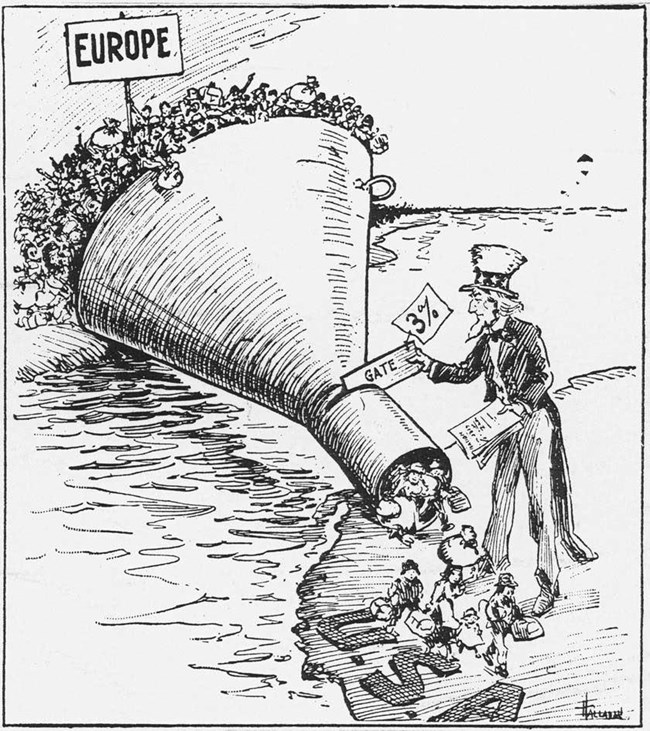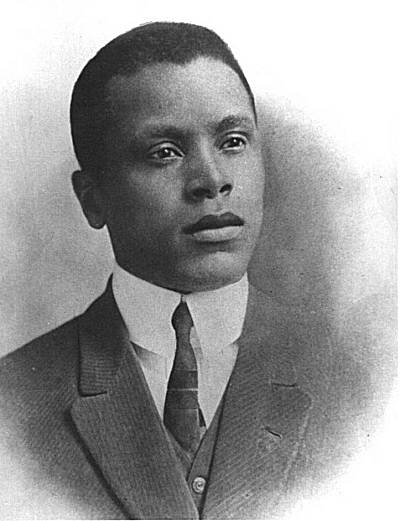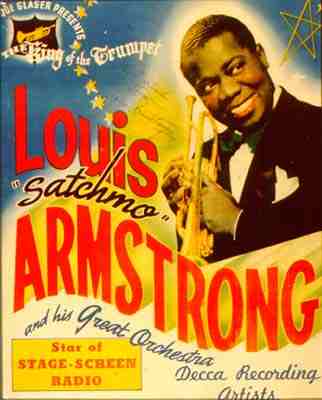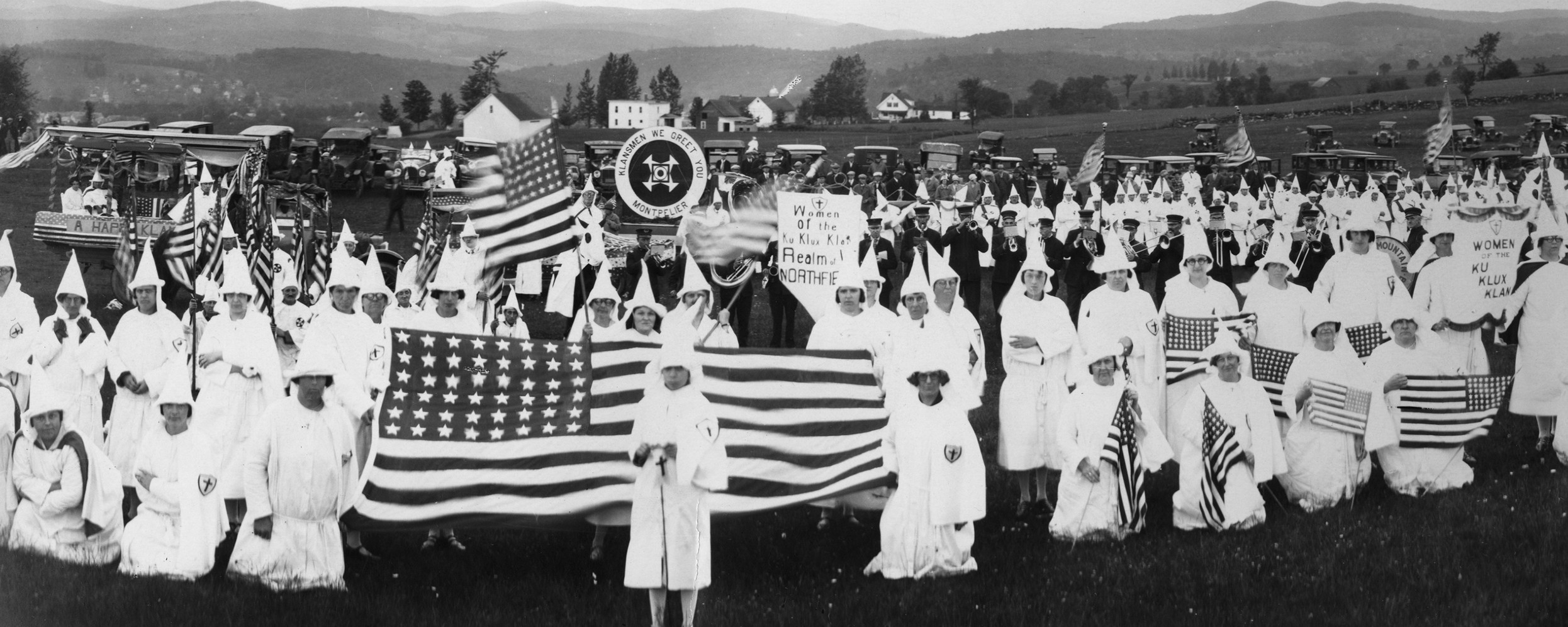7.8 1920s: Cultural and Political Controversies
9 min read•january 13, 2023
Caleb Lagerwey
Robby May
AP US History 🇺🇸
454 resourcesSee Units
First Red Scare
WWI also saw anti-immigrant sentiment, called Nativism, that continued and worsened in 1919 and the 1920s.
The First Red Scare began in June 1919 when an anarchist sent bombs through the mail to various government leaders, including to Attorney General A. Mitchell Palmer’s house. Palmer then began the infamous Palmer Raids with the help of the newly created FBI, led by J. Edgar Hoover.
They investigated, arrested, and deported those of communist, socialist, or anarchist sentiments, including famous labor activists like Emma Goldman. This was a sad denial of constitutional rights and civil liberties, but given the spread of communism in Russia and the fear of spreading social unrest at home, Palmer and many Americans thought it was necessary.
Nativism
This fear of immigrants would eventually lead to laws restricting immigration into the US. Immigration to America had peaked before and around WWI, with roughly 20 million immigrants coming between 1890 and 1924. In response and because of nativism, the US government passed the Emergency Quota Act (1922), which, for the first time in US history, established numerical limits on US immigration.

A political comic criticizing anti-Immigration policies
The number of immigrants allowed in from non-Western Hemisphere countries annually was limited to 3% of the number of residents from that same country living in the United States in 1910. This was clearly intended to reduce immigration from newer sources of immigration like Southern and Eastern Europe, especially Jews.
This act was then made permanent and much stricter in 1924 with the National Origins Act of 1924 that reduced the percentage to 2% and moved back the reference date to 1890, when the US was even more Anglo-Saxon and full of white, Protestant immigrants from Northern and Western countries. Both laws were thus designed to keep out so-called undesirable immigrants from places in Southern and Eastern Europe.

A newspaper headline discussing the National Origins Act
Keep in mind that pretty much all Asians were still excluded from immigration because of the Chinese Exclusion Act (1882), the Gentlemen’s Agreement with Japan (1907), and the Immigration Act of 1917 that established the Asiatic Barred Zone and literacy tests for new immigrants. None of the above laws applied to Latin America; however, which continued to be a source of important manpower through the 1920s.
Another famous example of this nativist hysteria was the trial of Sacco & Vanzetti, Italian anarchists who were convicted during a highly problematic trial of murder during a robbery and then killed via the electric chair. Many people all over the world at the time protested their executions and saw the case as an example of xenophobia and nativism gone too far.
Film
During the early 20th century, a wave of immigration and migration brought a diversity of cultures and traditions to the United States. This influx of people from various ethnic and regional backgrounds had a significant impact on the arts and literature of the time. One notable example is the film industry, which saw the rise of immigrant movie stars like Charlie Chaplin and the involvement of Jewish Americans in early film production studios. African American pioneers like Oscar Micheaux and Lon Chaney Sr. made significant contributions to the development of cinema, as did Latino pioneers like Carmen Miranda and Dolores del Río, and Asian American pioneers like Anna May Wong and Sessue Hayakawa.

Oscar Micheaux, known as Americas first black filmmaker
This period also saw the emergence of new forms of art and literature that celebrated ethnic and regional identities, such as the film "The Kid" (1921), which depicts the diversity of American society. The diversity of cultures and experiences represented in the arts during this time period reflects the rich tapestry of American society.
🎥 Watch: AP US History - the Roaring 20s
Jazz and the Harlem Renaissance
On the musical front, jazz and the blues spread from New Orleans and became popular throughout the country during the 1920s with performers such as Louis Armstrong and Duke Ellington. Okies moving from drought-stricken farms in the West brought country music to California.
The Harlem Renaissance
The Harlem Renaissance was a cultural movement that took place in the 1920s and 1930s, and it was a crucial moment in the history of African American art, literature, and culture. At the time, many African Americans were moving from the rural south to the urban north, and the Harlem neighborhood of New York City became a center of this cultural flowering.
One of the most prominent figures of the Harlem Renaissance was Langston Hughes, who was a poet, novelist, and playwright. Hughes' work was characterized by its focus on the African American experience and its use of jazz and blues rhythms. He wrote about the struggles of African Americans living in a society that was deeply racist, but also about the resilience and strength of the African American community.
Another important figure in the Harlem Renaissance was Zora Neale Hurston, who was a novelist and anthropologist. Hurston's work was notable for its focus on the African American folk tradition and for its celebration of African American culture. She is perhaps best known for her novel "Their Eyes Were Watching God," which tells the story of a strong and independent African American woman named Janie Crawford.
In the world of music, the Harlem Renaissance saw the emergence of jazz and blues, which were both forms of music that had their roots in African American culture. Jazz musicians such as Duke Ellington and Louis Armstrong became famous for their contributions to the genre, and blues musicians such as Bessie Smith and Ma Rainey also made their mark during this time.
In the world of dance, Josephine Baker became a major figure of the Harlem Renaissance. Baker was an African American dancer and actress who rose to fame in Paris during the 1920s and 1930s. She was known for her energetic and sensuous performances, and she was one of the first African American women to become a major international star.
Finally, Paul Robeson was a major figure in the world of drama during the Harlem Renaissance. Robeson was an actor, singer, and civil rights activist who was known for his powerful performances in plays such as "Othello" and "The Emperor Jones." He was also an outspoken advocate for the rights of African Americans, and he used his platform to speak out against racial injustice.

Overall, the Harlem Renaissance was a crucial moment in the history of African American culture, and it produced some of the most significant and enduring works of art, literature, and music of the 20th century. The movement was a celebration of African American heritage and a call to resist racial oppression, and it continues to inspire artists and activists to this day.
Cultural Controversies
The 1920s were a period of immense technological and social change, and this did not happen without controversy, of course. Americans argued about the roles of women, the merits of the modern lifestyle, science vs. religion, and race, all in addition to the previously mentioned issues of immigration. Plus, prohibition was technically in place, although widely ignored.
Changes for Women
First, and driven partly by changes in women’s ability to work outside the home and the effects of Progressivism (see the 19th Amendment), women were asserting themselves in new ways in the 1920s. They were voting, smoking, dancing, drinking, dressing how they wanted, and controlling more of their sex lives.
Alice Paul, who had helped to pass the 19th Amendment with her picketing and hunger strikes, pushed for the Equal Rights Amendment to the constitution. This new, modern woman was exemplified by the flapper, who wore short hair, short skirts, and challenged societal norms about dance, sex, and smoking.
The Scopes Monkey Trial
Another oft-debated aspect of modernism was its emphasis on rational explanations over and against religious ones. In one of the most famous events of the 1920s, the Scopes Monkey Trial in Tennessee was seen as a showdown between science (defended by Clarence Darrow) and religion (defended by William Jennings Bryan) over the issue of teaching evolution in public schools. In the trial, Darrow put Bryan himself on the stand as an expert on the Bible and called out his hypocrisy in taking the Bible literally in this case, but not all around. You can find his full testimony here. Give it a read and try to do some document analysis on it. Place it in the context of the 1920s and try to make an argument using document as a historical piece of evidence.
The Lost Generation
The trial demonstrated the variety of ways the US was growing and fracturing since it showed a divide between cosmopolitan urban people who embraced new ideas and traditionalist rural people who sought to preserve traditional values.
Some writers like F. Scott Fitzgerald (The Great Gatsby) and Ernest Hemingway (The Sun Also Rises) famously rebelled against the consumerism and optimism of the time, especially since some of them had served in WWI and were thus pessimistic about human progress. Others left the US altogether and joined other writers in Paris searching for meaning in a modern world in what was called the Lost Generation.
Prohibition
In 1917, Congress passed the 18th Amendment prohibiting the manufacture and sale of alcoholic beverages. The Volstead Act, which implemented prohibition, banned most commercial production and distribution of beverages containing more than one half of 1 percent of alcohol by volume. (exceptions for medicinal and religious uses. Production for private use was also allowed)
Rural areas became totally dry and there was a sharp drop in drinking among the lower classes in the cities who could not afford the cost of the bootleg liquor. Among the middle class and wealthy, drinking became fashionable. Bootleggers supplied whiskey, which was quickly replaced with lighter spirits such as beer and wine. They smuggled them from Canada or made them in their garages or basements.
Rival groups of gangsters including a Chicago gang headed by Al Capone fought for control of the lucrative bootlegging trade.Organized crime became big business. The millions made from the sale of illegal booze allowed the gangs to expand other illegal activities: prostitution, gambling and narcotics.
In 1933, the 21st Amendment repealing the 18th was ratified and millions celebrated the new year by toasting the end of Prohibition.
The Return of the KKK
Race relations—beyond the previously mentioned immigration issues—continued to be an issue in the 1920s. Before the 1920s, the KKK had been largely eliminated, especially due to actions taken during the Grant Administration. However, Jim Crow racism down South and the success of the film Birth of a Nation resulted in the Second KKK, which, much like the first KKK, targeted African Americans for racial terrorism. The KKK of the 1920s also targeted Jewish people, immigrants, and Catholics.
In response to this racism and Jim Crow segregation, some African Americans sought to leave the US altogether and return “Back to Africa” in the words of Marcus Garvey, who celebrated Black culture and advocated for Black separatism by moving African Americans to Africa (often Liberia). Awkwardly enough, this intersected with KKK notions of segregation, and Garvey controversially worked with the KKK on occasion.

The KKK in Vermont, 1924.
Presidency of Warren Harding
Harding basically signed every law that the Republican Congress passed
- a reduction in the income tax
- an increase in tariff rates.
- establishment of the Bureau of the Budget with procedures for all government expenditures to be placed in a single budget for Congress to review and vote on.
Harding ran on a platform of a "Return to Normalcy," appealing to Americans who wanted a return to pre-war America. This included deregulation, civic engagement, and isolationism.
His presidency was marked by scandals and corruption similar to those that had occurred under an earlier postwar president, Ulysses S. Grant.
- In 1924, Congress discovered that his Secretary of the Interior had accepted bribes for granting oil leases near Teapot Dome, Wyoming.
- His attorney general took bribes for agreeing not to prosecute certain criminal subjects.
Shortly before the scandals were uncovered publicly, Harding died suddenly while traveling in the West.
Presidency of Calvin Coolidge
Coolidge believed that it was his job to preside benignly and not govern the nation. He was nicknamed “Silent Cal”. Coolidge believed in limited government that stood aside while business conducted its own affairs. Little was accomplished in the White House except keeping a close watch on the budget. He chose not to run for a second term.
🎥 Watch: AP US History - 1920s and 1930s
Browse Study Guides By Unit
🌽Unit 1 – Interactions North America, 1491-1607
🦃Unit 2 – Colonial Society, 1607-1754
🔫Unit 3 – Conflict & American Independence, 1754-1800
🐎Unit 4 – American Expansion, 1800-1848
💣Unit 5 – Civil War & Reconstruction, 1848-1877
🚂Unit 6 – Industrialization & the Gilded Age, 1865-1898
🌎Unit 7 – Conflict in the Early 20th Century, 1890-1945
🥶Unit 8 – The Postwar Period & Cold War, 1945-1980
📲Unit 9 – Entering Into the 21st Century, 1980-Present
🚀Thematic Guides
🧐Multiple Choice Questions (MCQ)
📋Short Answer Questions (SAQ)
📝Long Essay Questions (LEQ)
📑Document Based Questions (DBQ)
📆Big Reviews: Finals & Exam Prep
✍️Exam Skills (MC, SAQ, LEQ, DBQ)

Fiveable
Resources
© 2023 Fiveable Inc. All rights reserved.